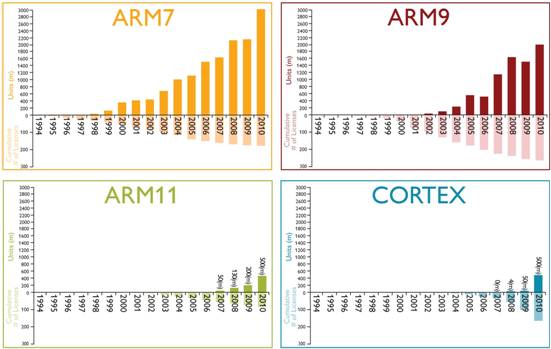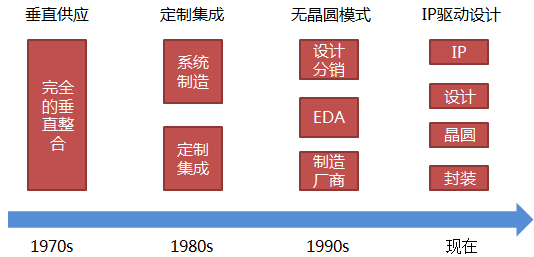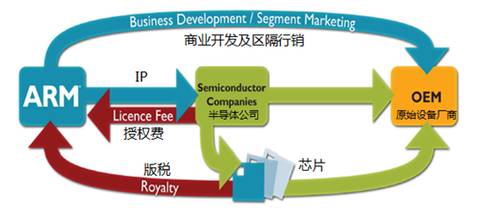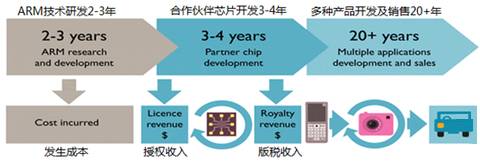Since its official establishment in 1990, ARM has continuously made breakthroughs in the field of 32-bit RISC (Reduced Instruction Set Computer CPU) development, evolving its architecture from V3 to V7. As ARM has always sold intellectual property (IP) to major semiconductor manufacturers without engaging in chip production and sales itself, and due to the significant advantages of its core designs, such as low power consumption and low cost, it has gained strong support from numerous semiconductor manufacturers and original equipment manufacturers (OEMs). ARM has achieved tremendous success in the 32-bit embedded application field, capturing over 75% of the market for 32-bit RISC embedded products, establishing a market leadership position in low-power, low-cost embedded applications. More than 50 international companies design and produce ARM chips, and domestic companies such as ZTE and Huawei have also purchased ARM’s core designs for the development of dedicated communication chips.
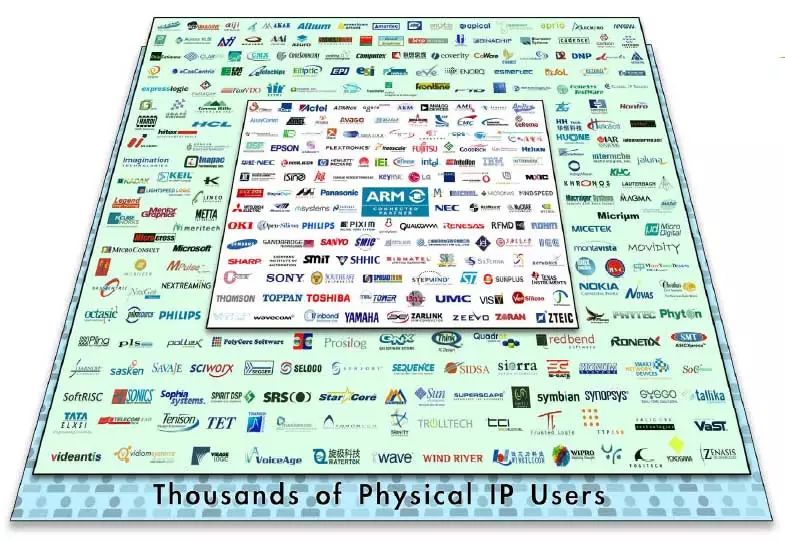
This is a significant event in the history of computer industry development, marking the shake-up of the dominance of x86 processors. Currently, in the mobile device market, ARM processors hold over 90% market share; in the server market, a 2.5GHz server will be launched this year (2011); and in the desktop computer market, there is now support from Microsoft. The mainstream adoption of ARM seems imminent, leading some to exclaim that Intel will be defeated!

Compared to this dramatic transformation, ARM, the main character of the story, has not received much attention and appears rather inconspicuous. How did this British company, located far from Silicon Valley in Cambridge, manage to bring down the chip giant Intel?
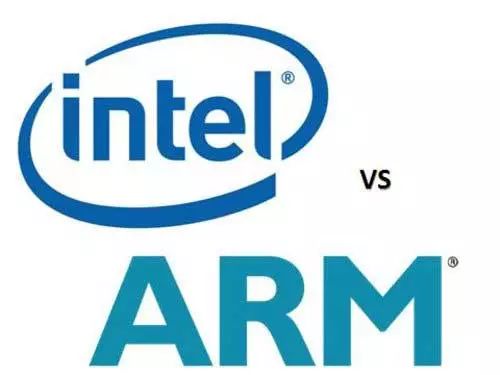
On December 5, 1978, physicist Hermann Hauser and engineer Chris Curry founded the Cambridge Processing Unit (CPU) in Cambridge, England, primarily supplying electronic devices to the local market.

In 1979, the CPU company was renamed Acorn Computers.

Initially, Acorn intended to use Motorola’s 16-bit chips but found them too slow and expensive. “A machine priced at £500 cannot possibly use a £100 CPU!” They turned to Intel for the design of the 80286 chip but were refused, forcing them to develop their own. (Will Intel regret this decision?)
In 1985, Roger Wilson and Steve Furber designed their first generation 32-bit, 6M Hz processor, creating a computer based on the RISC instruction set, abbreviated as ARM (Acorn RISC Machine). This is how the name ARM originated.

The full name of RISC is “Reduced Instruction Set Computer”; it supports simpler instructions, resulting in low power consumption and low cost, making it particularly suitable for mobile devices. A typical early device using ARM chips was Apple’s Newton PDA.
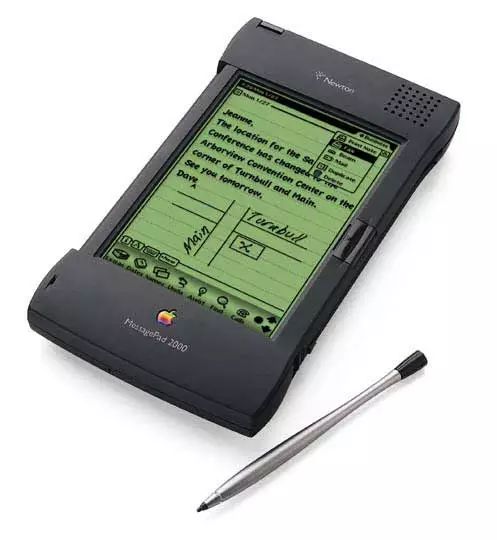
On November 27, 1990, Acorn was officially reorganized into ARM Computer Company. Apple invested £1.5 million, chip manufacturer VLSI invested £250,000, and Acorn itself contributed £1.5 million in intellectual property and 12 engineers as equity. The company’s office was very rudimentary – just a barn.
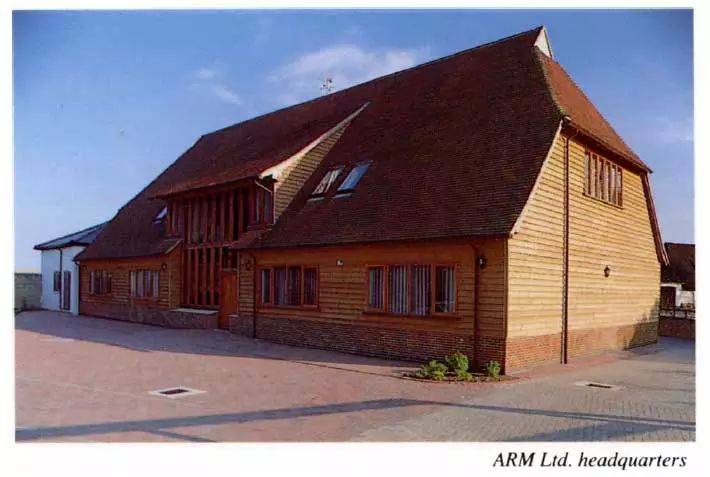
Scenes from meetings held in the barn.
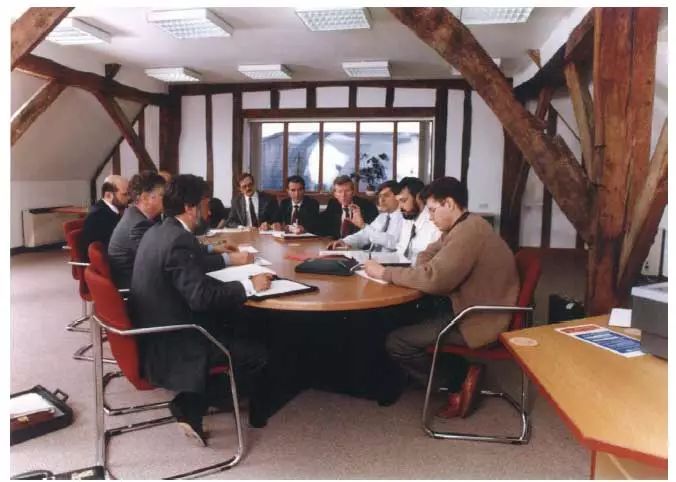
After the company was established, business was initially bleak, and engineers were anxious about potential unemployment. Due to a lack of funds, ARM made a far-reaching decision: it would not manufacture chips but would license chip designs to other companies for production. This model ultimately allowed ARM chips to proliferate, placing the closed design Intel in a sea of “people’s war”.
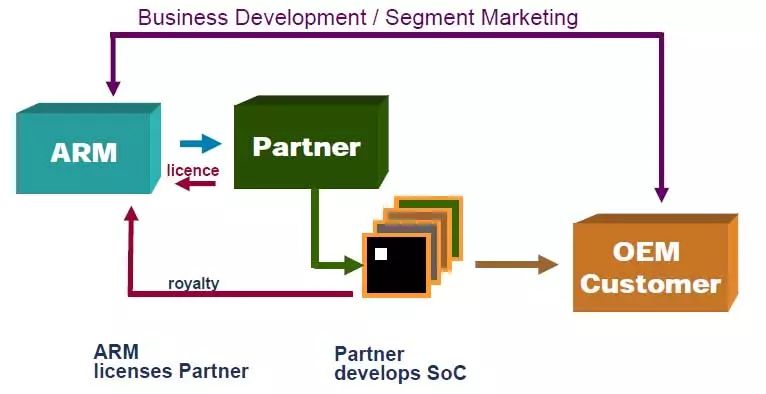
In the 1990s, ARM’s performance was mediocre, and processor shipments stagnated. However, entering the 21st century, due to the rapid development of mobile phones, shipments exploded, and ARM processors captured the global mobile phone market. In 2006, global ARM chip shipments reached 2 billion, and by 2010 this number was expected to reach 4.5 billion.
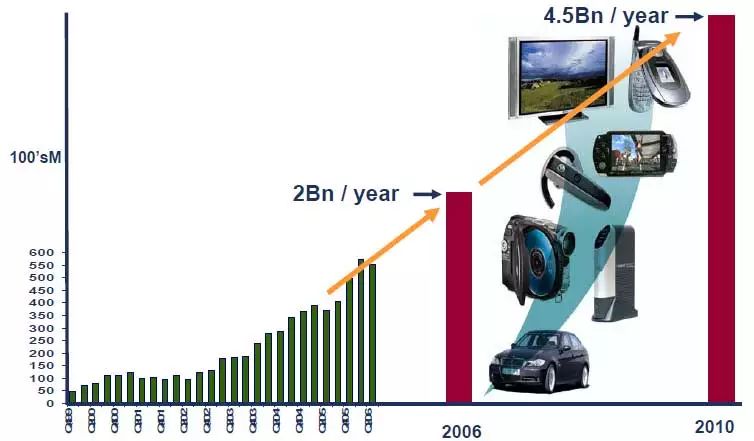
By the end of 2007, ARM had a total of 1,728 employees, held 700 patents (with another 900 pending), had 31 global branches, 200 partners, and an annual revenue of £260 million.
The following image shows a company gathering in 2004.

Looking to the future, even if Intel successfully implements its Atom strategy, significantly reducing the power consumption and cost of x86 chips, competing with ARM will be very challenging. This is because ARM’s business model is open; any manufacturer can purchase a license, so the future will not be Intel vs. ARM, but Intel vs. all other semiconductor companies in the world. In that case, what are Intel’s chances?
As we entered the 2000s, benefiting from the rapid proliferation of mobile phones and other electronic products, ARM series chips experienced explosive growth. In November 2001, cumulative shipments exceeded one billion, and in 2011, annual shipments of ARM series chips reached 7.9 billion, with annual revenue of £492 million (approximately $785 million) and a net profit of £113 million.
|
|
ARM’s development represents a trend in the semiconductor industry, from complete vertical integration to deep specialization. In the 1970s, the semiconductor industry generally adopted a vertically integrated closed production system. Starting in the 1980s, the semiconductor industry began to differentiate, leading to two systems: vertically integrated and specialized manufacturing, with TSMC’s foundry model further promoting the development of specialization. The semiconductor industry has become increasingly segmented, forming an upstream and downstream system of IP, design, wafer, and packaging, with ARM at the top of the value chain.
|
|
ARM is the standard setter for microprocessors, and its designed processors are the core of many digital products. As shown in the following image, the company has an innovative business model, licensing microprocessor design solutions (IP) to partners (such as Qualcomm, Broadcom, Texas Instruments, MediaTek, etc.), who integrate their technologies based on ARM and launch various chips. ARM earns licensing fees and royalties.
|
|
Next, we briefly introduce the design and licensing cycle of ARM processors. ARM mainly focuses on the research and development of high-efficiency, low-power chip (microprocessor) architectures, typically taking 2-3 years, which is the cost-generating phase for ARM. Then, companies that choose ARM as partners pay an entry licensing fee to obtain design solutions and develop their products based on ARM solutions, usually over a 3-4 year cycle. When the partner’s chips begin to ship, ARM receives royalties of 1-2% from each chip based on its architecture, and each ARM design solution can adapt to various terminal applications, each of which can generate years of royalty cash flow, demonstrating significant economies of scale.
|
|
We can understand ARM’s commercial value from another perspective: ARM’s business model is similar to outsourcing microprocessor design to ARM, i.e., research and development outsourcing. Compared to internal research and development, this licensing + royalty outsourcing model can reduce corporate costs to some extent. Outsourcing the entire industry’s processors to a single company is significantly more economically efficient than developing independently, spreading R&D costs and lowering end product prices, which in turn further drives technological advancement.
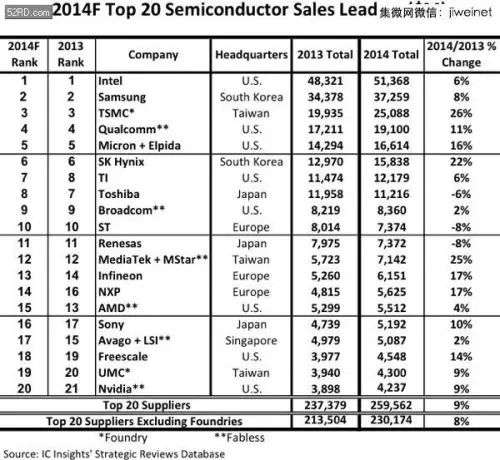
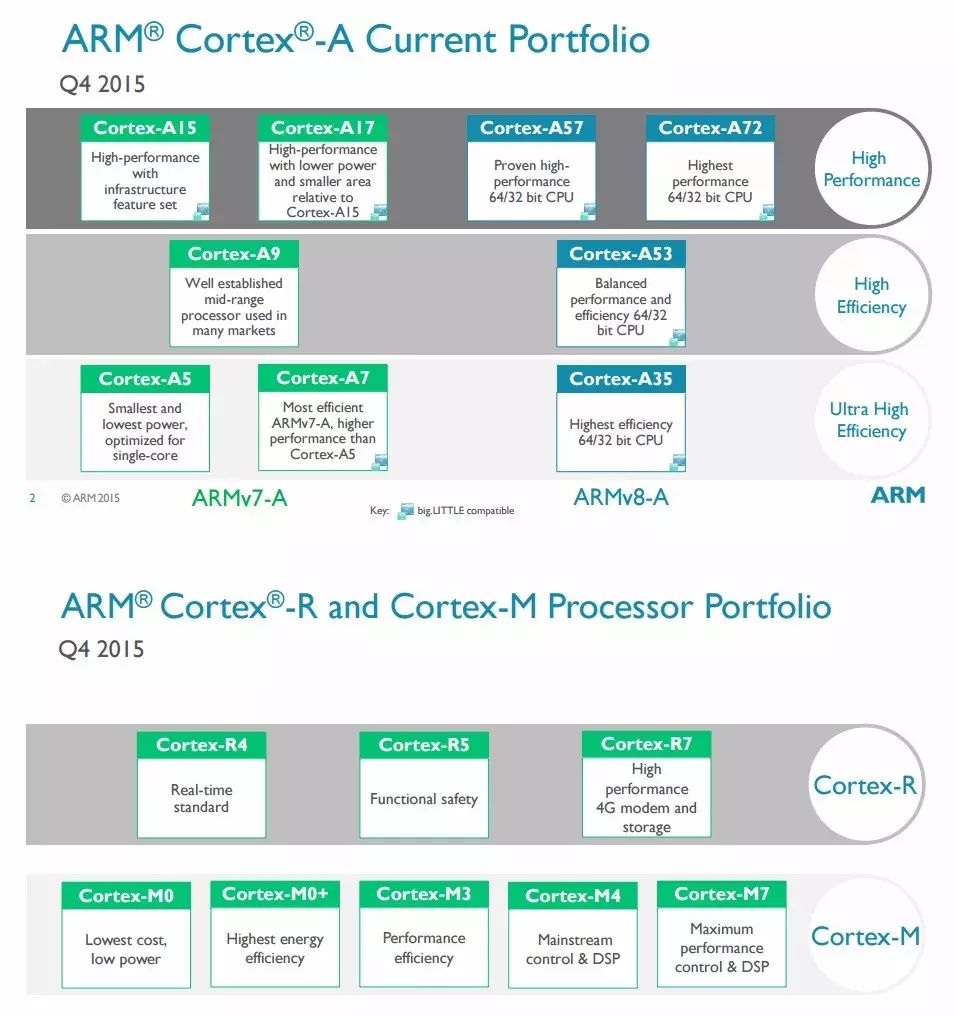
ARM profits by designing architectures and licensing them. Under ARM’s architecture, many capable companies design unique processors. Mobile chip applications using ARM architecture have become the most important market for ARM chips.
Apple Swift & Cyclone
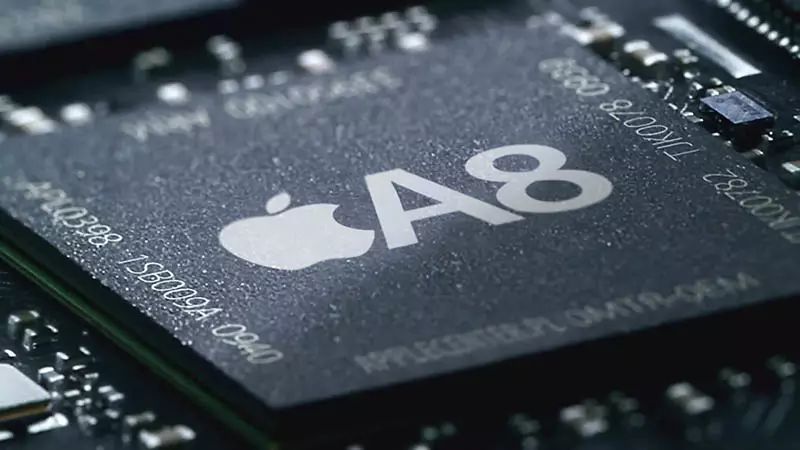
Apple Overview:
Apple Inc. is a high-tech company based in the United States, founded on April 1, 1976, by Steve Jobs, Steve Wozniak, and Ron Wayne, originally named Apple Computer Inc. It was renamed Apple Inc. on January 9, 2007, and is headquartered in Cupertino, California.
In its early days, Apple primarily developed and sold personal computers, but by 2014, it had shifted to designing, developing, and selling consumer electronics, computer software, online services, and personal computers. Apple’s Apple II contributed to the personal computer revolution in the 1970s, followed by the Macintosh in the 1980s. The company’s hardware products mainly include the Mac computer series, iPod media players, iPhone smartphones, and iPad tablets; online services include iCloud, iTunes Store, and App Store; and consumer software includes the OS X and iOS operating systems, iTunes multimedia browser, Safari web browser, as well as iLife and iWork creative and productivity suites. Apple is renowned worldwide for its innovation in the high-tech industry.
Apple Smartphone Processors
Since the iPhone 4, Apple has begun branding its CPUs, first named A4, which is actually a CPU based on the ARMv7 instruction set and Cortex-A8 architecture. Starting with the A6 in the iPhone 5, Apple designed its Swift architecture, using the ARMv7-A instruction set, with performance between Cortex-A9 and Cortex-A15. The A7 was the first to use the 64-bit ARMv8 architecture, named Cyclone. The current A8 processor boasts even stronger performance, benefiting from the second-generation excellent Cyclone architecture design, optimized for single-threaded tasks on iOS, achieving ideal performance while maintaining sufficiently low power consumption.
Besides Qualcomm and Apple having their own architectures, companies like Samsung, MTK, and NVIDIA use ARM’s existing solutions.
As a leader in the tech industry, Apple certainly has the strength to create and produce its own smartphone processors. Since the iPhone 4, Apple’s A-series processors have accompanied iPhone upgrades. Although the Android camp focuses on multi-core processors, due to Apple’s closed ecosystem, Apple’s processors, while not competing on core count, still provide a relatively good user experience with the iOS system.
Samsung Semiconductors

Samsung Semiconductor Overview:
In 1974, Samsung Electronics acquired Hankook Semiconductor and established its semiconductor division in South Korea. The company’s early business primarily involved developing and mass-producing ICs and peripherals for household appliances such as LED watches, televisions, audio players, and microwave ovens. In 1983, Samsung Semiconductor successfully developed 64Kb DRAM memory, subsequently establishing the Xiangxing Semiconductor Industrial Park. In 1984, Samsung’s first memory production line was put into operation, laying a foundation for Samsung to become a world-leading semiconductor manufacturer.
Through an aggressive expansion strategy, Samsung successfully won and maintained its leadership in the memory market since 1993, and from 2003 onwards, it has held the number one market share in NAND Flash. In 2001, the company expanded its system LSI division and established the Samsung Semiconductor SoC Research Laboratory, penetrating the fields of logic and analog chip development. In 2004, the hard disk drive division merged with the Samsung semiconductor business.
Samsung Smartphone Processors
Samsung Semiconductor also has considerable strength in CPUs. Early Apple CPUs were all produced by Samsung. Although it does not have the technology to design instruction sets and architectures, it operates more like a traditional semiconductor company, designing and manufacturing its chips in-house. However, its integration capabilities are not as comprehensive as Qualcomm’s. Due to high smartphone shipment volumes, Samsung is somewhat self-sufficient and occasionally sells some chips to others.
Samsung’s manufacturing process is commendable; Apple CPUs have always been produced by Samsung. It is said that the A8 processor orders were snatched by TSMC, while the Exynos 5430 is the world’s first 20nm process processor, with the next generation expected to adopt a 14nm process. However, Samsung’s processors currently lack integrated mature baseband, GPS, Wi-Fi, and other modules, which increases development difficulty and deters some smartphone manufacturers.
In recent years, Samsung has thrived in the smartphone market. Although its performance has declined this year, it still holds a high market share. A high market share indicates significant shipment volumes, and many of Samsung’s smartphones choose to use their own chips, demonstrating Samsung’s remarkable strength.
MTK (MediaTek)
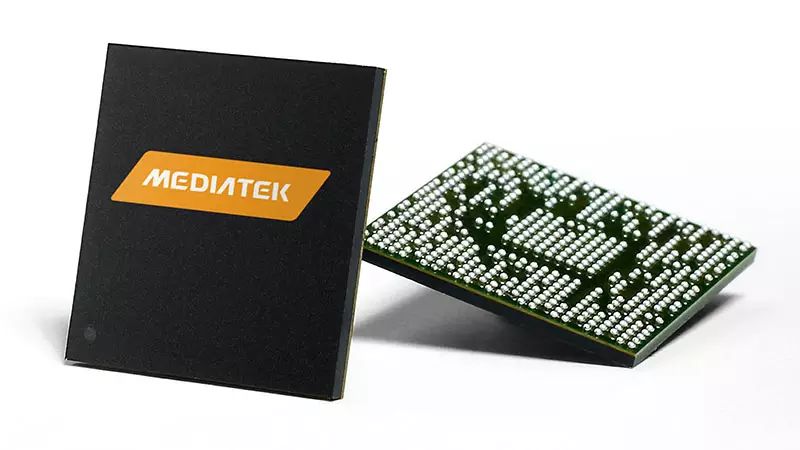
MediaTek Overview:
MediaTek Inc. is a globally renowned IC design manufacturer, focusing on wireless communication and digital multimedia technologies. Its chip integration system solutions include wireless communication, high-definition digital television, optical storage, DVD, and Blu-ray products. MediaTek was founded in 1997 and is publicly listed on the Taiwan Stock Exchange. Its headquarters is located in Taiwan, with sales or R&D teams in mainland China, India, the United States, Japan, South Korea, Singapore, Denmark, the UK, Sweden, and the UAE.
MediaTek is considered a dark horse in the chip industry (though not exactly a dark horse, just more well-known in recent years), having emerged during the era of counterfeit phones, but has steadily developed good products over the years, gradually shedding the low-cost counterfeit image.
MediaTek Smartphone Processors
MediaTek is a pure chip design company; it has no factories or proprietary architectures. However, its chip integration level is second only to Qualcomm, integrating baseband, ISP, GPS, Wi-Fi, and other power management modules, with ideal power consumption control, and its prices are very reasonable.
MediaTek is a chip manufacturer with an engineering mindset, but its marketing efforts need improvement. The naming of its products makes it hard to distinguish between high and low-end products at a glance. Recently, the MT6595 has ranked at the top in benchmark scores. Regardless, MediaTek is perhaps the only company capable of competing with Qualcomm’s dominance.
When mentioning MediaTek, you might first think of counterfeit phones. Indeed, MediaTek has made significant contributions to counterfeit phones and has also played a huge role in the price reduction of smartphones. MediaTek’s market positioning is in the mid-to-low end, so many budget smartphones are equipped with MediaTek processors. MediaTek’s processors, like the budget smartphones they power, are inexpensive but offer guaranteed performance.
NVIDIA
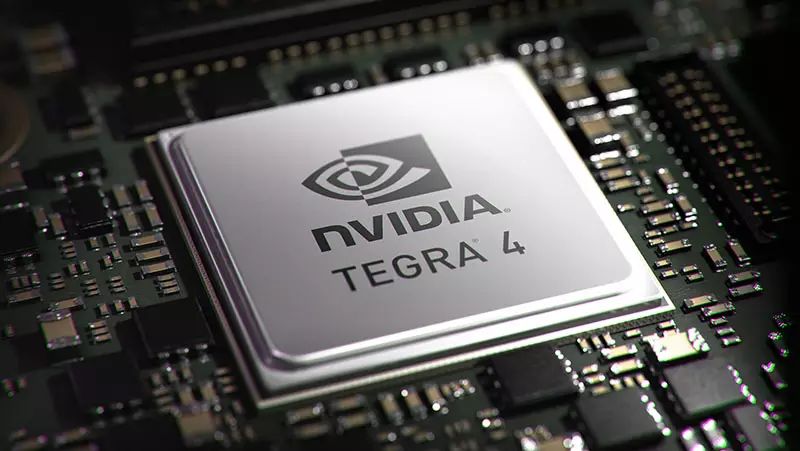
NVIDIA Overview:
NVIDIA Corporation (NASDAQ: NVDA), founded in January 1993, is a semiconductor company focused on designing intelligent core chipsets. NVIDIA is a leading manufacturer in the graphics technology and digital media processor industry, headquartered in Santa Clara, California, and employs about 5,700 people in over 20 countries and regions. The company has advanced expertise in programmable graphics processing and has achieved numerous breakthroughs in parallel processing.
NVIDIA Smartphone Processors
Although NVIDIA specializes in graphics processing chips, it has also participated in the development and production of smartphone CPUs in recent years, such as the Nvidia Tegra series. Tegra 4 was used in the Xiaomi 3, excelling in GPU performance, but it faces the challenge of high power consumption. The latest Tegra 1 has also been criticized for excessive power consumption, making it suitable only for tablets.
NVIDIA is a latecomer in the CPU market. Since launching the Tegra 4 smartphone chip over a year ago, it has yet to unveil a new chip. Whether it is a fleeting attempt remains to be seen, as this market lacks established technology, making it difficult to gain traction. Even a powerhouse like Intel has struggled to capture market share quickly, let alone NVIDIA.
Compared to Qualcomm and MediaTek, NVIDIA’s smartphone processors are relatively niche. While NVIDIA excels in graphics processors, it has recently ventured into smartphone CPUs, yet no standout product has emerged to quickly dominate the market. In the rapidly evolving smartphone market, it remains to be seen whether NVIDIA can keep up and secure a place in the smartphone processor market.
HiSilicon
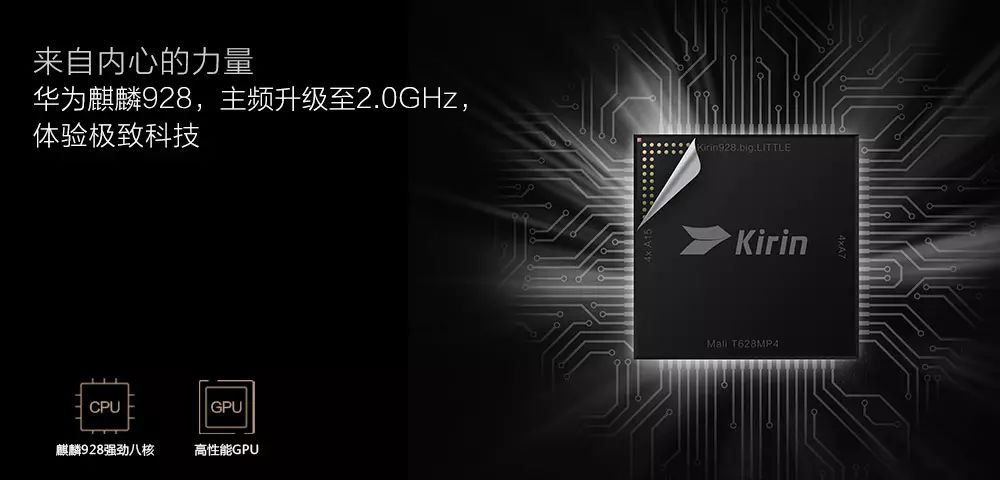
HiSilicon Overview:
HiSilicon Semiconductor Co., Ltd., established in October 2004, originated from Huawei’s Integrated Circuit Design Center founded in 1991. HiSilicon’s headquarters is located in Shenzhen, with design divisions in Beijing, Shanghai, Silicon Valley in the United States, and Sweden. HiSilicon’s products cover chips and solutions in wireless networks, fixed networks, and digital media, successfully applied in over 100 countries and regions worldwide. In the digital media sector, it has launched solutions and chips for network monitoring, visual telephony, DVB, and IPTV.
HiSilicon Smartphone Processors
HiSilicon Semiconductor is a standout in the local chip industry, leveraging Huawei’s market share in smartphones to gain a foothold in the smartphone processor market. The performance of the Kirin 928 is commendable, as it remains self-sufficient and unrestrained by suppliers, which is enviable.
As one of the few companies capable of designing and manufacturing smartphone processors, HiSilicon has launched its first 64-bit Kirin 620 smartphone processor this year, keeping pace with the trend in smartphone processor chips, showcasing HiSilicon’s formidable capabilities. Although HiSilicon currently may not threaten Qualcomm and MediaTek, the model of Huawei smartphones equipped with HiSilicon processors could aid in HiSilicon’s growth.
In the realm of smartphone CPUs, Qualcomm still reigns supreme, though its lofty position can be a bit irksome; Samsung is a promising contender, yet somewhat self-indulgent; MediaTek has firmly established itself in the low-end market, and whether it can transform and gain more recognition remains to be seen. Apple possesses exceptional capabilities but operates in a realm apart; NVIDIA is struggling, while HiSilicon thrives in its own niche.
However, in an era of rapid smartphone updates, we still observe changes in the smartphone processor industry. We vaguely remember some familiar faces that have now faded into the background: Texas Instruments, Marvell, STMicroelectronics.
With the rise of the Internet of Things, drones, smart wearables, and connected vehicles, manufacturers like STMicroelectronics, Atmel, and Freescale are experiencing a renaissance.
We also see that ARM is keen on laying out plans in the Internet of Things:
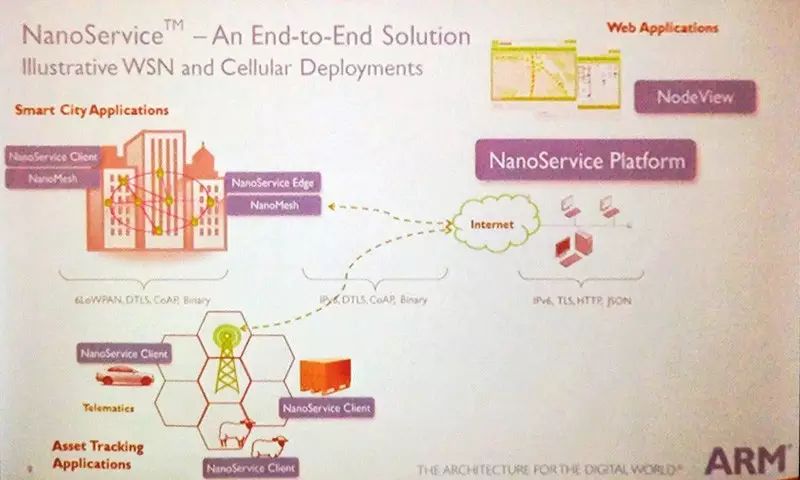
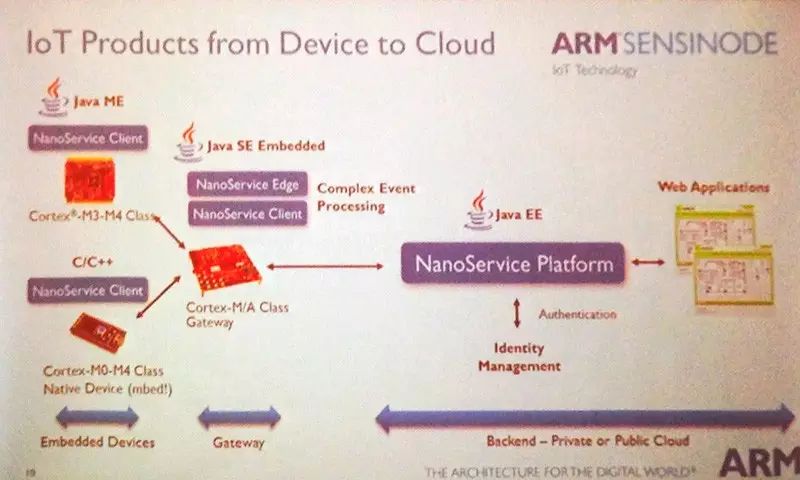
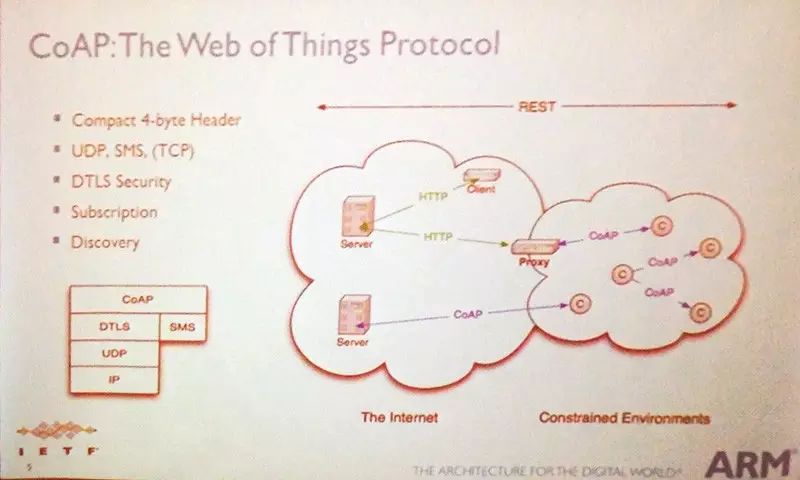
STMicroelectronics (ST) recently announced its fourth quarter and full-year financial report for the year ending December 31, 2015. The fourth quarter net income totaled $1.67 billion, with a gross margin of 33.5% and a net profit of $2 million. In 2015, the company reported a total net income of $6.9 billion, with a gross margin of 33.8% and a net profit of $10.4 million.
STMicroelectronics President and CEO Carlo Bozotti stated that the market demand was weak in 2015, and the fourth quarter sales revenue and gross margin met the company’s expectations, maintaining stable cash flow each quarter and throughout the year. Bozotti further pointed out that in 2015, the company’s R&D and marketing efforts focused on two areas: the first being smart driving enabled by digitalization and electrification; the second being the Internet of Things (IoT), including wearable and portable systems, smart homes, smart cities, and industrial applications. The company has launched product technologies and system application R&D capabilities targeting these two areas, providing the market with automotive and industrial products, microcontrollers, digital ASICs, analog and power product combinations, as well as MEMS products and dedicated image sensors.
